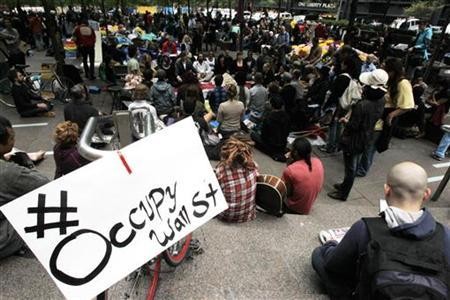by Joshua Friedlander
Just the other week, New York cops cleared out hundreds of Occupy Wall Street protesters from Zuccotti Park in Manhattan’s financial district. There was a feeling among the protesters that the movement had come of age, that at last the image of bored hipsters latching onto a cause had been somewhat dispelled. As I write this, there are copycat movements taking place in 82 countries around the world. Coming on the heels of the Arab Spring (in fact, organizers cited the Tahrir Square protests in Egypt as partial inspiration), the movement has highlighted the way in which Twitter is fast becoming the quickest and best way of making things happen.
It’s been less than six years since the microblogging giant began life as yet another optimistic Web 2.0 start-up, with one bright idea and venture capital, sans any sort of business plan. Word now has it that an IPO — anticipated sometime in 2013 — would attract a cool $8 billion. During these six years, the website has undergone several evolutions, shifting from its peripheral position in our culture to being a vital and perhaps the most important form of communication available to the public.
If you’re reading this, you’re probably familiar with the way Twitter works. OK, who are we kidding – you’re probably tweeting this to your followers on your iPhone while playing Words With Friends or G-chatting with your old roommate in Pasadena. The idea is a simple one, seemingly without much depth, or point: reductio ad nihilum. Saying more with less; failing that, just saying less.
But for such a small mouthpiece, Twitter has a very big mouth. The hash-tag ‘#OWS’ was tweeted around 50,000 times per day last month as tens of thousands camped out in protest of corporate greed, political lobbying and the social and economic inequalities. The old media giants were caught off-guard (plus ça change!) as the biggest news story of 2011 broke on the news-feeds of hundreds of average Egyptian citizens. Not since 1989 had we witnessed such a spontaneous outbreak of popular sentiment.
While everybody else was busy using Twitter to change the world, I was captivated by a completely different aspect of it. There is a smorgasbord of underground comedians getting their start through the medium — making it, perhaps, Generation Z’s equivalent of Johnny Carson’s Today Show (the current iteration of which, under Jay Leno’s tired stewardship, has about as much current relevance as Night at the Opera). Some like, Rob Delaney, have broken through exclusively via Twitter, while others have fallen into the medium on the side of successful careers. (Harvard-educated Megan Amram would probably have managed just fine even without the buzz of her more than 120,000 followers.)
For other people, it’s simply the way they get their news — following industry insiders, breaking political scandals, and last-minute baseball trades. Some connect to the celebrities we are otherwise so removed from, basking in the artificial intimacy of knowing Kim Kardashian’s workout schedule. And then there are the social networkers, venting their private thoughts and frustrations to friends who care enough to follow them.
So far, so Tumblr. What is it that makes Twitter more than a fad? Why has it trumped all other media over the past summer? Why has it slashed its way across front pages, complete with harrowing images of proletariat rage?
The answer may lie in how we define communication. In its most primitive form, it is grunts and symbols; all the way down the spectrum it is our body language, the way a girl tilts her head or a child holds his mother’s hand. The actual words can be the least important component: “The medium is the message,” in the famous phrasing of Marshall McLuhan. The Canadian-born researcher — an early visionary of the hyper-reality of the internet society — used the analogy of a light bulb, which lights up a room, thereby creating an environment wherein life takes place. It is an eloquent statement, without any words.
Twitter is the perfect reflection of our hyperspeed world. Attention spans are shorter than ever, eroded first by television and then the internet’s endless and instant availability of music, TV, and news. No one calls any longer when a text would suffice; no one writes letters in to convey a two-line memo. The way that a culture communicates is a reflection of its priorities. The message of Twitter, then, is that we prefer speed of access over all other considerations. Yesterday’s news is already ancient history.
With an estimated three hundred million users, Twitter can no longer be ignored. Once more, the internet generation has shown its defining characteristic as adaptability — constantly finding new ways to communicate, to incubate new ideas, and to organize. Politicians who fail to anticipate this will find themselves left behind, as the power of mass communication promptly reveals the voice of the people.
Joshua Friedlander is a student at Machon Lev in Jerusalem, Israel.

